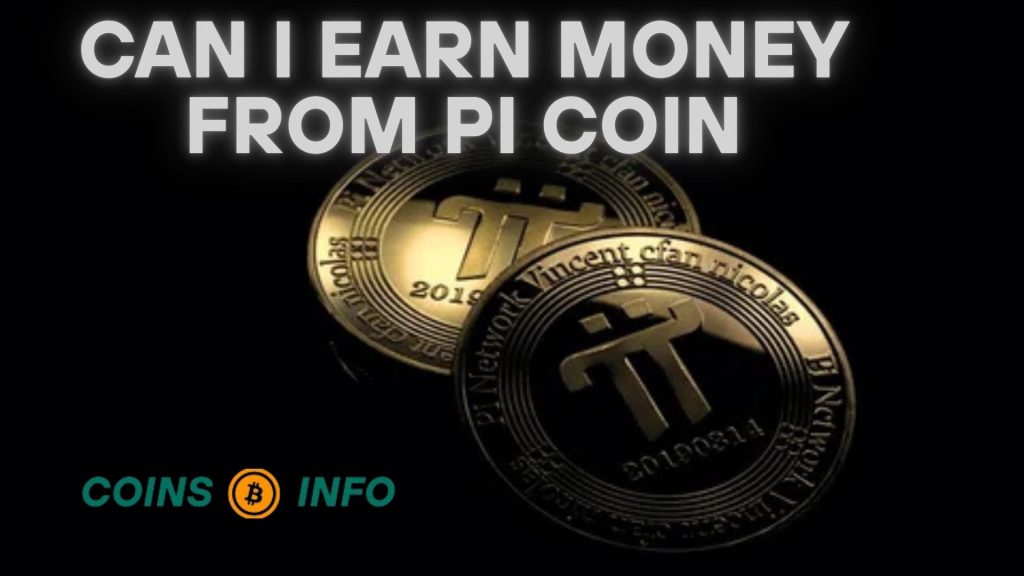earn money from Pi coin: Many people are interested in new cryptocurrencies like Pi Coin and whether it’s possible to profit from them as the globe adopts digital currencies more and more. A team of Stanford PhDs created Pi Coin, which garnered attention for enabling bitcoin mining on cellphones without draining battery life. The issue still stands, though, as with any new venture: Is it possible to make money using Pi Coin? The coin’s level of development, market acceptance, exchange listing, and user involvement are some of the variables that affect the answer, which is a complex matter.
What is Pi Coin?
Dr. Nicolas Kokkalis, Dr. Chengdiao Fan, and Vincent McPhillip started the Pi Network project in 2019, and Pi Coin is its native cryptocurrency. Pi Coin may be mined with a smartphone app, in contrast to Bitcoin, which requires specialist hardware. According to the network, it uses a mobile-friendly and energy-efficient consensus mechanism called the Stellar Consensus Protocol (SCP).
The project is divided into several phases:
- Phase 1: Design and allocation of the Pi Coin to early adopters.
- Phase 2: Testnet launch and improvement of the network.
- Phase 3: Mainnet launch, where the coin becomes tradable and can be used for real-world transactions.
The Pi Network claims to be in the mainnet phase as of late 2023, though trading is still limited to within the Pi community.
How People are Earning Money with Pi Coin.
While Pi Coin is not fully tradable on major exchanges like Binance or Coinbase, there are still ways users are trying to profit from it:
1. Holding and Future Appreciation
One of the most common strategies is holding Pi Coin (also known as “HODLing”) in hopes that its value will increase over time. This is a speculative strategy similar to how early Bitcoin adopters held onto their coins when BTC was worth only a few cents. If Pi Coin becomes listed on major exchanges and gains adoption, early holders could potentially see significant profits.
2. Peer-to-Peer (P2P) Trading
Some users are already engaging in P2P trades, exchanging Pi Coin for goods, services, or even fiat currency. This occurs mostly within the Pi Network’s community via marketplaces, chat forums, and social media groups. For example, someone may sell a used phone or digital product in exchange for Pi. These transactions are unofficial and involve risk but represent real-world utility.
3. Pi Ecosystem Jobs and Rewards
Pi Network is gradually building its ecosystem, including apps, games, and online stores that accept Pi. Users can earn coins by participating in these platforms as developers, sellers, or service providers. If the ecosystem grows, earning through contributions could become a genuine income source.
4. Referrals and Team Building
The Pi app encourages users to invite others to join the network through a referral system. Each referral can increase your mining rate, giving you more Pi over time. While you don’t earn direct money from referrals, more coins mean more potential value if the coin appreciates.
Challenges and Limitations.
While the potential exists, earning money from Pi Coin isn’t guaranteed. Here are the main limitations:
1. Not Listed on Major Exchanges
As i Coin is not available for trading on most reputable cryptocurrency exchanges. This makes it difficult to convert Pi into fiat currency like dollars or rupees. Without liquidity and exchange access, the coin’s value is mostly theoretical. of now, P
2. Unclear Market Valuation
Since it’s not officially traded, Pi’s price varies depending on the P2P market and region. Some claim it’s worth $1–$10 per Pi, while others argue it’s worthless until listed. Without a universal valuation, it’s hard to measure how much you’re earning.
3. Regulatory and Technical Risks
As with all cryptocurrencies, regulatory scrutiny is a risk. Authorities in some countries have warned against or banned crypto-related activities. Moreover, the Pi Network’s technology and decentralization claims are not fully open-source or verified by independent experts, which raises transparency concerns.
4. KYC (Know Your Customer) Issues
To transfer Pi to your mainnet wallet and eventually trade it, you must complete KYC verification. Many users haven’t completed this due to technical backlogs or country restrictions. Without KYC, you may not be able to access your coins or use them freely. What the Future Holds.
The Pi Network’s future hinges on several key developments:
- Mainnet Launch Progress: A fully open mainnet with coin listing on exchanges would be a major turning point. This would allow real trading and pricing, making profits possible.
- Adoption and Ecosystem Growth: The more businesses, developers, and users that accept and build on Pi, the more valuable the coin becomes.
- Regulatory Clarity: Clear legal guidelines can help users and developers confidently engage with the project.
If Pi Coin achieves its goals and is adopted as a functional currency within a decentralized ecosystem, early adopters could benefit financially. However, this is a big “if,” and many similar projects have failed to deliver.
